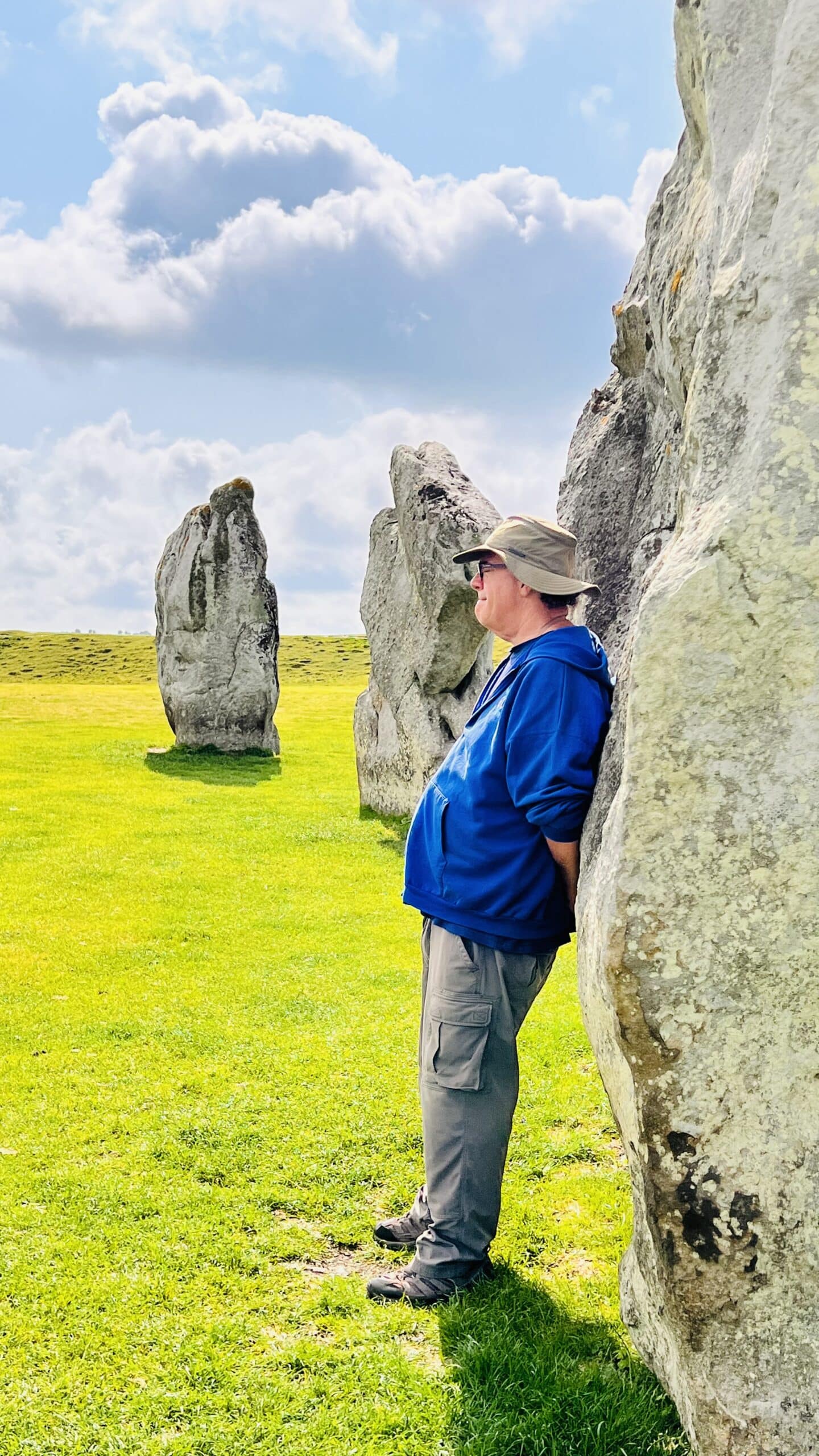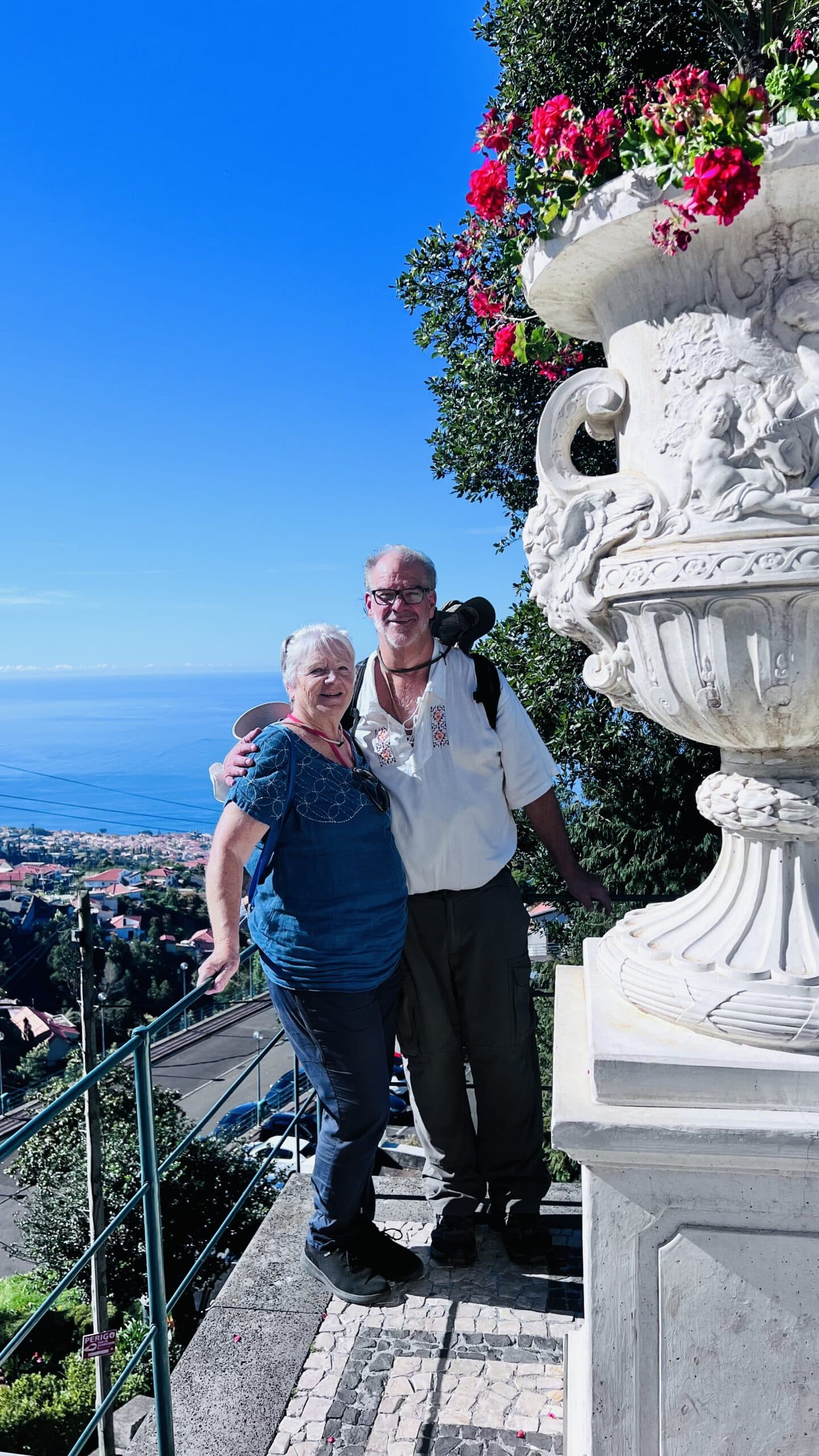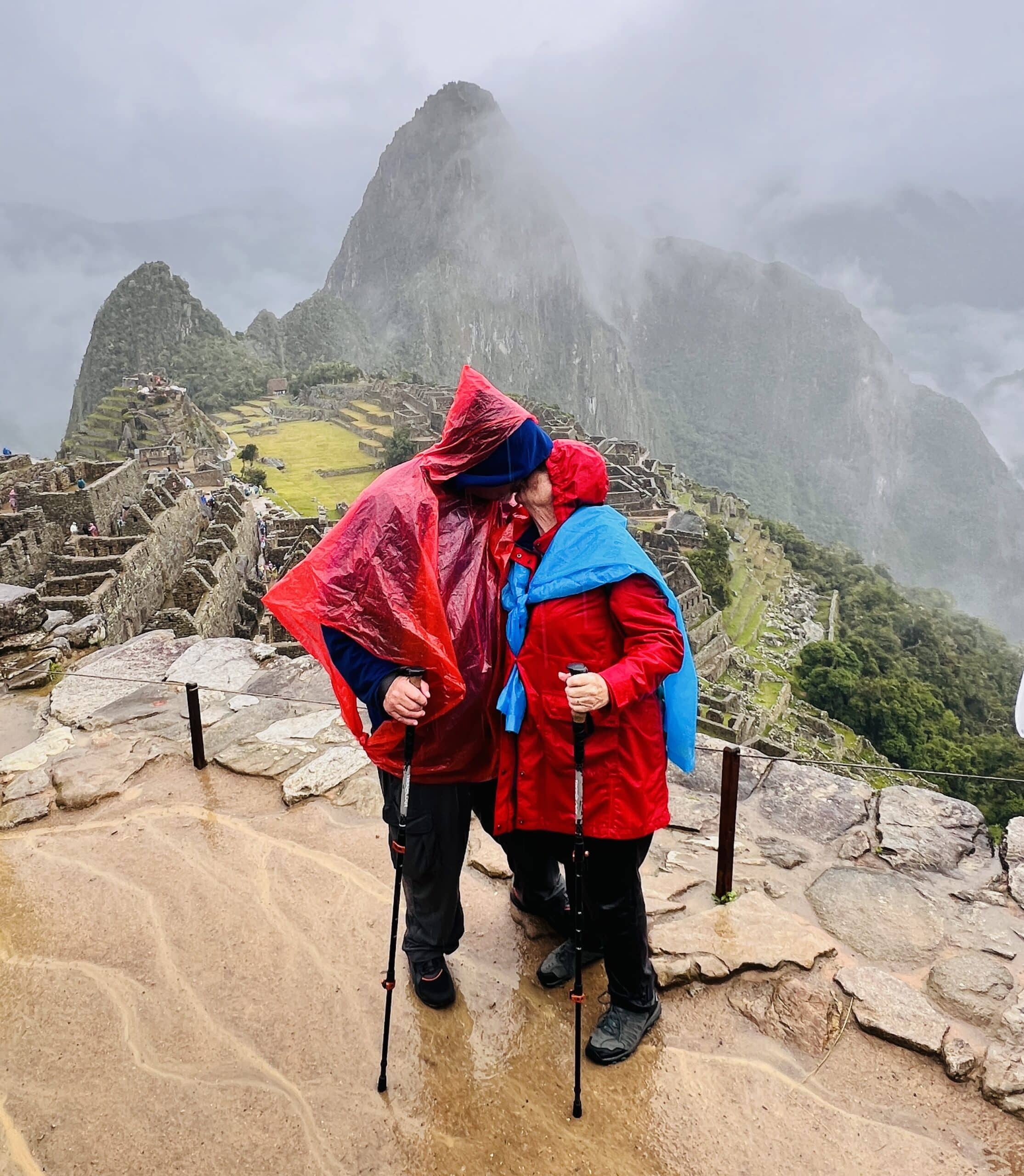Reader Guest Post – Adventure Before Dementia
Today, I bring you a guest post from a couple of nomadic retirees, Tom Swan and Georganna Hawley. They’ve been living a nomadic lifestyle for about two and a half years and have no plans for stopping.
If you’ve considered this lifestyle in retirement, and even if you haven’t, you’ll find their story fascinating and learn valuable lessons from their experiences. Topics covered include their experience with downsizing, how they’ve dealt with health issues while on the road, choosing locations where they want to spend time in retirement and handling logistics, and other lessons learned along the way.
We have no financial relationship. Take it away Tom and Georganna….
This is a Lifestyle, Not a Vacation
“We are NOT on vacation” is perhaps the most common answer to our friends’ and family’s misunderstanding of our Nomad lifestyle. Typically, Americans go on a 2-3 week vacation, frantically seeing everything possible in a “whirlwind tour.” Then they return home and require another 2-3 weeks to recover from the vacation.

Yes, we have seen some wonderful, iconic, even exotic places. However, we also buy our veggies at the open market, ride the local trains or buses and take free walking tours instead of organized “touristy” tours. Sometimes we even stay in and just do laundry like everyone else.
We are Tom Swan and Georganna Hawley, semi-retired Americans. We are living our best life with this new, and often misunderstood lifestyle. In September of 2021, we “embraced the change” that many of our fellow boomers are not yet ready to face.
Embracing Change
Covid-19 restrictions allowed Tom to close his office and work online. Our grandsons became adults, and we suddenly didn’t need a big house. A minimalist aesthetic was making us think our stuff owned us instead of the other way around.
We were intrigued and inspired by a radio interview on Rick Steves with Michael and Debbie Campbell, The Senior Nomads. All this was happening on the brink of looming retirement and had us asking what we want from this new phase of our lives.
Downsizing
We began the monumental task of shedding all our possessions in 2020. I sold 4 sewing machines. Tom sold his precious drill press and all his tools. We also sold or gave away those special china dinner settings our daughter did not want (NOTE: your kids do not want your stuff). We scanned all the contents of photo albums (now stored on the cloud), had seven yard sales, and countless trips to Goodwill.
Finally, we got it all down to only two rolling carry ons, and two backpacks. We retained two 14 gallon storage bins (half full of treasures) to store at our daughter’s house. We sold our house and one of our two cars. Last, we drove our truck to our daughter’s house to hand over the storage bins, and we presented the keys and pink slip of the truck to our oldest grandson.
Related: Downsizing In Retirement – Any Regrets?
Hitting the Road
After that, we fairly danced all the way to the airport jet way to fly off to our first nomad destination, Vienna, Austria, on September 23, 2021.
Some nomads choose to keep their house and rent it out, keep a storage unit in their home town, and/or maintain a mother-in-law cottage with their kids. We chose to dive off the deep end without any “what if we change our minds” contingencies. We find it keeps us focused forward, learning how to make this nomad lifestyle work, with no “escape clause”.
I’m now 72, a retired archaeologist and textile artist. Tom is 65 and continues to work remotely as a retirement planner and financial advisor. He works servicing clients’ needs from wherever we are.
Good WIFI is crucial, and available all over the world! His phone is on a VOIP (Voice Over Internet Protocol), and is actually his old office number. So clients recognize it’s him, but everyone he calls asks, “Where is Tom today?”
What About Healthcare?
Tom needed both arthritic knees replaced, but his insurance company claimed he was too “young” and needed to wait for Medicare to pay for it. And most US surgeons will only do one at a time.
While visiting Istanbul, Turkiÿe he obtained a free consultation with a team of two orthopedic surgeons who quoted a price that was less than 1/3 of the insurance copays in California. So, we scheduled surgery. Tom had his knees replaced in Istanbul; both on the same day.
His care was remarkable. Physical therapy was painful but tolerable, and 5 weeks after surgery we were walking along Hadrian’s Wall in northern England.
We do carry international health care insurance for emergencies and an evacuation policy for me. But, to be honest, if something happened to me, I’d rather go to Türkiye.
The USA has health insurance, the rest of the world has health care. Big difference.
Getting Around
Our transportation mode of choice is via train in Europe, but buses are also a good option if we want to go a bit slower. Public transportation in Europe is usually clean, cheap, and extensive. We have found that a good alternative can be to hire a private driver, especially if we are crossing multiple borders in non-EU countries.

Travel in South America offers fewer alternatives. There are few trains, and buses can range from great to downright awful. We usually opt for flying between South American countries.
Repositioning cruises are also a good choice for nomads for trans-oceanic travel. A cruise ship provides us with our transportation, accommodation, food and entertainment all in one package. With cruises, we don’t have to pack/unpack for weeks at a time, and no jet-lag! We choose to fly only as a last resort in most cases.
Meeting Logistical Challenges
Travel arrangements are of course up to us, and it has become a part time job. We work together, doing research on places, what we want to do, and the best time of year to stay in particular locations.
We also consider recommendations from other nomads. It often makes sense to travel in a particular direction; north and east for spring and summer months, and then begin heading south for the winter, always chasing 72 degrees.
Many nomads choose to see the Arctic or Antarctic and have wonderful stories and photos. We choose to stay in warmer climates and keep our change-of-seasons packing to a minimum. If we never see snow again, that will be just fine with us.
The internet is (mostly) our friend for planning and making reservations. It takes quite a bit of organization, but we manage redundancy with a paper calendar, excel spreadsheets, and both of us having all confirmations and reservations on our computers and phones.

I copy a map online and label the next few months where we will be, then post it so family can follow our progress. Even though we work together to plan our travels, we have still managed to make plane reservations for the wrong day, forgotten how the International Date Line works, and gotten our timezones confused.
As Nomads, we have learned to pivot, solve problems and find alternatives quickly.
Choosing Accommodations
We like to stay in apartments with a kitchen and washing machine with easy access to the local metro or bus. Usually finding Airbnb’s in a city center neighborhood suits us. Fast, reliable WIFI and an elevator are a must.
We also enjoy volunteering at English Immersion retreat sessions and we have done this four times now. It’s a great way to meet and get to know the local people and the free accommodations help to stretch the budget.
This year we added a house/pet sitting into the mix. We get to spend quality time with dogs and cats, and stay in a real home, sometimes in the English countryside, other times in a southern California suburb. Variety keeps our nomad lifestyle fun and interesting.
Fine Tuning Our Planning
We are still searching for the sweet spot of how long to stay in any one place. Often a week is enough to hold our interest, and a month may be too long.
If weather or timing keep us from doing all we were planning for, we know we can always come back next year, or the next. Sometimes we purposely do not seek out all that we think would be interesting, knowing a town or region will definitely be on our “return for longer” list.
The Schengen Zone is a challenge for us and other Nomads, and is a crucial part of our planning. The Schengen Zone comprises 27 European Union countries + 4 other countries.
As Americans we can only stay in the Schengen for 90 days out of 180. The countries outside the zone means our “Schengen Shuffle” is constantly on the radar (there are apps for that).
Last year Croatia entered the zone, and in 2024 Romania and Bulgaria are scheduled to enter. This means we will need to find alternative countries to explore while we wait for our Schengen clock to reset.
Türkiye, Albania, Macedonia, Georgia, and five of the “Stans” are good nomad choices. Even the tiny mountain country of Andorra between Spain and France is outside the Schengen. And what about North Africa? The endless possibilities are a big reason we keep traveling.
Isn’t This Expensive?
Of course we have a budget, we are not spending wildly on vacation, after all! The money saved not having to pay utilities, taxes, cars, gas, tires, repairs, and multiple insurances means we spend less than if we still lived in California. Even our monthly accommodation costs are less than our mortgage.
Transportation costs are also much less than the cost of owning multiple cars. We don’t often buy clothing because the space is limited in our suitcase. Many nomads buy clothes at thrift stores and re-donate when they leave a location. We choose to go with what we have and if it gets cold, we just head south!
We each own one pair of sturdy walking shoes. I did buy a wonderful vintage denim jacket in Hamburg, Germany last year. It’s too bulky to pack, so I had to make the conscious decision that I must wear it on every travel day. When that gets to be too cumbersome, I can leave it in a donation bin for someone else to love.
Leveraging Travel Rewards
Another budget stretcher is using credit card reward points to our advantage. Last year Tom manipulated our points into 22 free hotel nights and 16 free business class plane tickets. The “points game” is growing in popularity among nomads, and well worth Tom’s time spent studying the continuously changing options.
Related: Travel More & Spend Less With Credit Card Travel Rewards
Are we still happy with our choice to get rid of everything and travel the world as modern day senior nomads? Yes! When do we plan to stop (the second most asked question)? We don’t.
If health or unknown circumstances make us rethink our lifestyle, we can pivot. We have done it before, we can do it again when that time comes.
Chris’ $.02
Thanks to Tom and Georganna for sharing your story. Their only desire for sharing their story is to ispire and connect with others who share their interests. You can connect with them through their “Two Travelers” Facebook page.
If you enjoyed their story, check out another guest post from nomadic retirees Margot and Nick.
Reader guest posts are always popular on the blog. If you’d like to share your story send me an email at chris@caniretireyet.com.
* * *
Valuable Resources
- The Best Retirement Calculators can help you perform detailed retirement simulations including modeling withdrawal strategies, federal and state income taxes, healthcare expenses, and more. Can I Retire Yet? partners with two of the best.
- Free Travel or Cash Back with credit card rewards and sign up bonuses.
- Monitor Your Investment Portfolio
- Sign up for a free Empower account to gain access to track your asset allocation, investment performance, individual account balances, net worth, cash flow, and investment expenses.
- Our Books
* * *
[Chris Mamula used principles of traditional retirement planning, combined with creative lifestyle design, to retire from a career as a physical therapist at age 41. After poor experiences with the financial industry early in his professional life, he educated himself on investing and tax planning. After achieving financial independence, Chris began writing about wealth building, DIY investing, financial planning, early retirement, and lifestyle design at Can I Retire Yet? He is also the primary author of the book Choose FI: Your Blueprint to Financial Independence. Chris also does financial planning with individuals and couples at Abundo Wealth, a low-cost, advice-only financial planning firm with the mission of making quality financial advice available to populations for whom it was previously inaccessible. Chris has been featured on MarketWatch, Morningstar, U.S. News & World Report, and Business Insider. He has spoken at events including the Bogleheads and the American Institute of Certified Public Accountants annual conferences. Blog inquiries can be sent to chris@caniretireyet.com. Financial planning inquiries can be sent to chris@abundowealth.com]
* * *
Disclosure: Can I Retire Yet? has partnered with CardRatings for our coverage of credit card products. Can I Retire Yet? and CardRatings may receive a commission from card issuers. Some or all of the card offers that appear on the website are from advertisers. Compensation may impact on how and where card products appear on the site. The site does not include all card companies or all available card offers. Other links on this site, like the Amazon, NewRetirement, Pralana, and Personal Capital links are also affiliate links. As an affiliate we earn from qualifying purchases. If you click on one of these links and buy from the affiliated company, then we receive some compensation. The income helps to keep this blog going. Affiliate links do not increase your cost, and we only use them for products or services that we’re familiar with and that we feel may deliver value to you. By contrast, we have limited control over most of the display ads on this site. Though we do attempt to block objectionable content. Buyer beware.
Join more than 18,000 subscribers.
Get free regular updates from “Can I Retire Yet?” on saving, investing, retiring, and retirement income. New articles weekly.
You’re Almost Done – Activate Your Subscription! You’ve just been sent an email that contains a confirmation link. Please click the link in that email to finish your subscription.
Millions of people rollover their workplace 401ks and other kinds of accounts into an IRA every year. Right now,…
Copyright © 2024 Retiring & Happy. All rights reserved.








